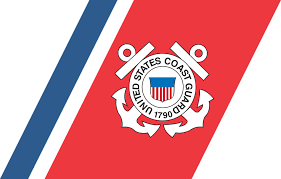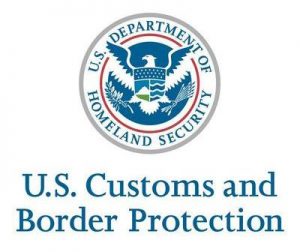Purpose: The purpose of this notice is to advise the local maritime industry of the importance of foreign AGM free certification inspections.
Background: The Department of Homeland Security, US Customs and Border Protection (CBP) and the Department of Agriculture, Animal and Plant Health Inspection Service (APHIS) have coordinated efforts to prevent the introduction of harmful insect pests into the United States. One such pest is Asian Gypsy Moth [AGM], an extremely invasive species of moth that has not been introduced into the United States, and is not currently present in North America. This pest is destructive to the ecology, may feed on over 600 plant species, and can seriously affect U.S. agriculture and forest resources. An AGM infestation could result in the defoliation of environmentally important species. Dense populations of AGM could cause economic and environmental damage. AGM is presently known and well established in Northern China (including all ports north of 31° 15′ N latitude; north of Shanghai), Japan, South Korea, and Far East Russia. The AGM Regions are: Northern China, Japan, South Korea and Far East Russia. The female AGM deposits egg masses during the high risk flight season between June and September, and these egg masses are the most likely life stage to be found on vessels which have visited or transited high risk ports during the AGM high risk flight season. The AGM High Risk Flight Season runs from June thru September. Attracted by the lights on ships, the females may lay eggs on a vessel’s superstructure.
An AGM find on a vessel may require that the vessel be:
- Ordered into international waters;
- Required to undergo treatment;
- Re-inspected;
- Refused entry;
Procedures:
CBP recommends that all vessels that called ports in AGM Regions during the AGM High Risk Flight Season arrive with a valid foreign AGM free certification. This certification may prevent CBP New Orleans from discovering AGM infestations onboard vessels in port, thus reducing the requirement for an infested vessel to be ordered removed from port for cleaning in international waters. Captains of vessels arriving from AGM Regions during the AGM High Risk Season are encouraged to have vessel crewmen inspect their vessels for AGM prior to arriving in the Port of New Orleans.
Vessels that called ports in AGM Regions during the AGM High Risk Flight season arriving at a CBP port without a valid foreign AGM free certification pose a greater risk for AGM infestations because AGM required risk mitigation efforts have not been applied at the foreign port. However, vessels will not be denied entry into a CBP port because of a lack of a valid foreign AGM free certification.
As a reminder, CBP will perform an AGM inspection on all AGM targeted vessels regardless of the vessel’s foreign AGM free certification status.
Previously, the vessel master, agent, owner, operator or designee, was required to fax or e-mail a copy of the vessel’s “Ports of Call” list to CBP prior to the arrival of a vessel from a foreign or coastwise port prior to arrival in the New Orleans Tri-Port. At this time, Ports of Call lists are no longer required to be submitted, unless CBP requests this information.
AGM targeted vessels transiting directly to Baton Rouge will be restricted to one of the lower Mississippi River anchorages, as determined by CBP. CBP will notify the vessel agent of all AGM related anchorage restrictions and will conduct the AGM inspection at the designated anchorage during daylight hours. CBP cannot conduct AGM inspections during non-inclement weather.
Suspect AGM Egg Mass Discoveries by Vessel Crew:
If a suspect AGM egg mass is discovered onboard a vessel before arrival at the Port of New Orleans, the vessel agent/representative should:
o Inform the captain to have a crewmember carefully scrape off the suspect AGM egg mass with a knife or paint scraper and place the suspect AGM egg mass into the vessel’s incinerator and incinerate the suspect AGM egg mass.
- If the vessel does not have a functional incinerator, have the crewmember place the suspect AGM egg mass into a Ziploc bag and place the specimen in a refrigerator. Do not freeze.
o Notify the CBP Operations Desk at (504) 670-2270.
If a suspect AGM egg mass is discovered while a vessel is in the Port of New Orleans, the vessel agent/representative should:
o Inform the captain to have a crewmember mark the area and do not remove the suspect AGM specimen.
o Notify the CBP Operations Desk at (504) 670-2270.
A CBP boarding team will be dispatched to the vessel to conduct an AGM inspection. If the Agriculture Specialist determines that a specimen is suspect for AGM, normal AGM protocols will be followed.
Note: If a suspect AGM infested vessel is diverted to a foreign port before entering the Port of New Orleans, the CBP Operations Desk must be notified and the vessel crew should place the suspect egg mass in alcohol and/or incinerate the specimen. Never throw a suspect AGM specimen overboard.
Effective Date:
The procedures contained in this notice are effective upon receipt. Please contact Supervisory CBP Agriculture Specialist Kendall P. Gaines at Kendall.Gaines@cbp.dhs.gov or (504) 670-2055 with questions or concerns.



